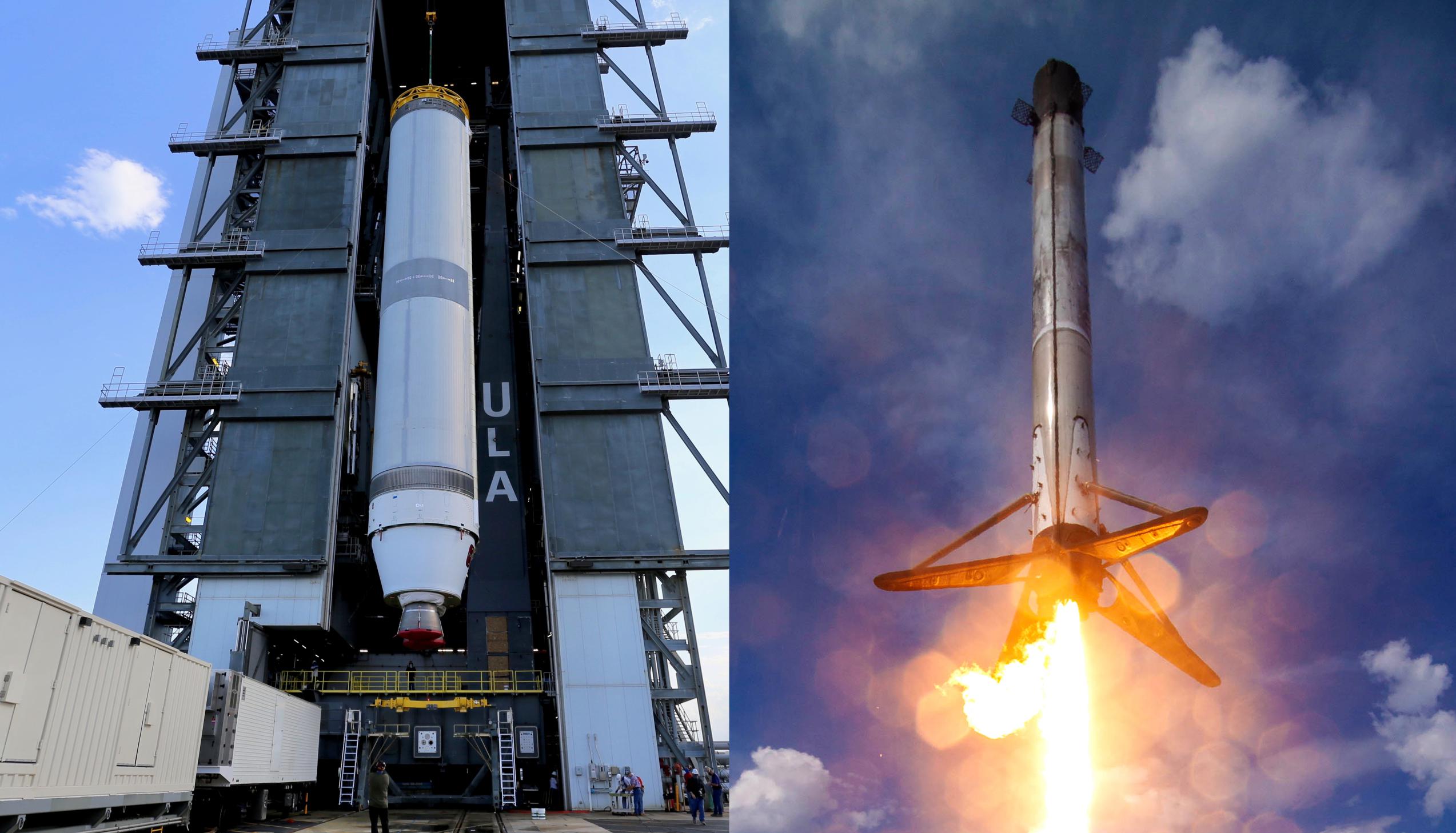

News
SpaceX Falcon 9 crushes next-gen ULA Vulcan rocket on cost in first competition
The United Launch Alliance’s (ULA) next-generation Vulcan Centaur rocket appears to have made it through what could be described as its first real competition with SpaceX and its Falcon 9 workhorse.
The US Space Force (or Air Force) awarded both rockets two launch contracts each on March 9th, marking the second award under “Phase 2” of a new National Security Space Launch (NSSL; formerly Evolved Expendable Launch Vehicle or EELV) agreement. The culmination of a multi-year competition, NSSL Phase 2 calcified in late 2020 when the US military ultimately chose ULA and SpaceX as its primary launch providers for the better part of the next decade.
The final Phase 2 agreement followed Phase 1, in which the USAF committed up to $2.3 billion to assist Blue Origin, Northrop Grumman, and ULA in their efforts to develop future military launch capabilities. SpaceX submitted a proposal but didn’t win funds. Even though the ULA-SpaceX dichotomy was already a more or less fixed outcome before the competition even began, the US military still managed to dole out almost $800 million to Blue Origin and Northrop Grumman before announcing that neither provider had been selected for Phase 2.
Notably, as part of Phase 1, ULA is on track to receive nearly $1 billion in USSF/USAF aid to develop its next-generation Vulcan Centaur rocket and ensure that it meets all of the military’s exacting, unique requirements. SpaceX, on the other hand, received a sum total of $0 from that opaque slush fund to meet the exact same requirements as ULA.
For Phase 2, the US military arbitrarily split the roughly two-dozen launch contracts up for grabs into a 60/40 pile. Even more bizarrely, the USAF did everything in its power to prevent two of the three rockets it had just spent more than $1.7 billion to help develop from receiving any of those two or three-dozen available launch contracts – all but literally setting $800M of that investment on fire. Short of comical levels of blind ineptitude, verging on criminal negligence, the only possible explanation for the US military’s behavior with NSSL Phase 1 and Phase 2 is a no-holds-barred effort to guarantee that ULA and its Vulcan Centaur rocket would have zero real competition.
The arbitrary 60:40 split of the final Phase 2 contract ‘lot’ further supports that argument. A government agency objectively interested in securing the best possible value and redundancy for its taxpayer-provided money would logically exploit a $1.7B investment as much as possible instead of throwing two-thirds of its ultimate value in the trash. On its own, a block-buy scenario – even with a leading goal of selecting two providers – is fundamentally inferior to an open competition for each of the dozens of launch contracts at hand.
Further, selecting the block-buy option and failing to split those contracts 50:50 makes it even clearer that the USAF’s only steadfast NSSL Phase 2 goal was to guarantee ULA enough Vulcan launch contracts for the company to be comfortable and (most likely) not lose money on a rocket that has yet to demonstrate an ability to compete on the commercial launch market.
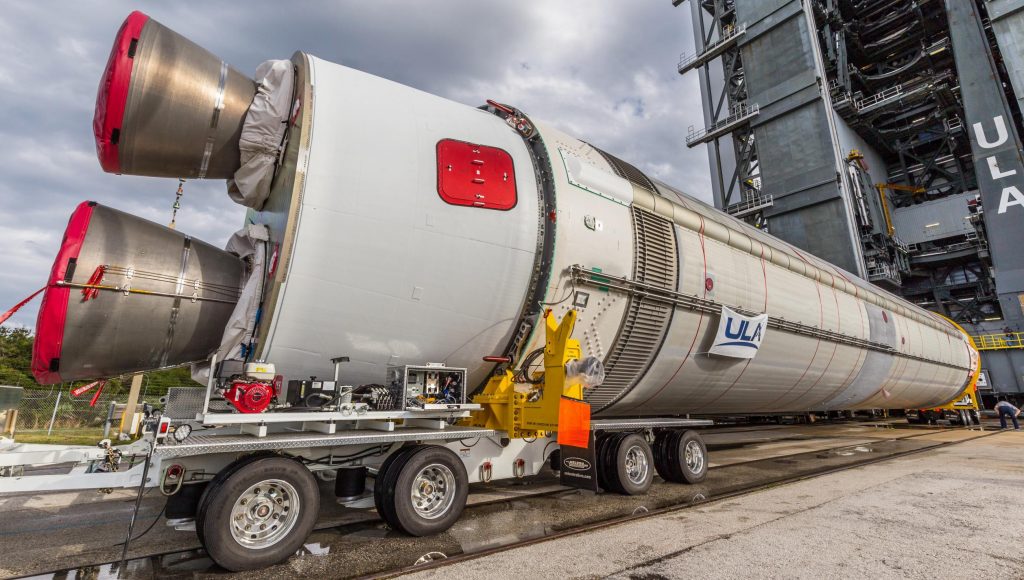
Amazingly, despite multiple handicaps in the form of a 60:40 contract split and what amounts to a $1B subsidy that explicitly disadvantages its only competitor, ULA’s Vulcan rocket still appears to be ~40% more expensive than SpaceX’s Falcon 9. In the latest round of NSSL Phase 2 contracts, seemingly the first in which ULA’s Vulcan Centaur rocket was selected, SpaceX’s Falcon 9 received two East Coast launch contracts worth slightly less than $160M, averaging out to less than $80M each.
Outfitted with four of a possible zero, two, four, or six strap-on solid rocket boosters (SRBs), Vulcan Centaur received two launch contracts for $224M – an average of $112M each. Assuming ULA wins exactly 60% (~15) of the Phase 2 launch contracts up for grabs and receives no more than $1 billion in USAF development funding through NSSL Phase 1, some $67 million will have to be added to the cost of each announced Vulcan launch contract to get a truly accurate picture. In the case of the rocket’s first two contracts, the real average cost of each Vulcan Centaur launch could thus be closer to $179M ($112M+$67M).
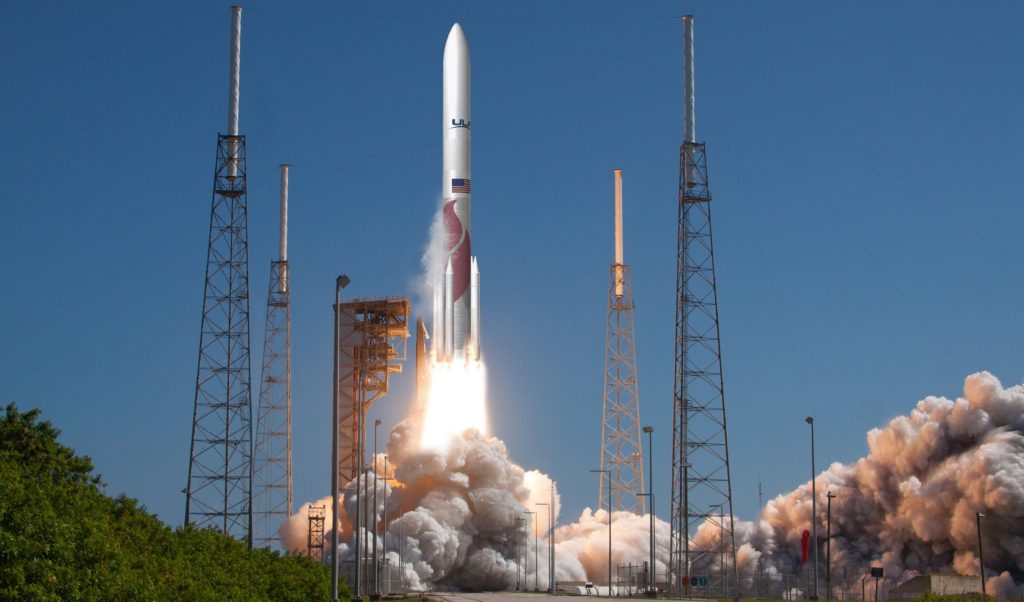
According to ULA CEO Tory Bruno, both Vulcan missions are to “high-energy orbits,” whereas a USAF official told Spaceflight Now that SpaceX’s two Falcon 9 contracts were to “lower-energy orbits.” In Vulcan’s defense, if Bruno’s “high-energy orbit” comment means a circular geostationary orbit (GEO) or a very heavy payload to an elliptical geostationary transfer orbit (GTO), it’s possible that SpaceX would have had to use Falcon Heavy to complete the same contracts. Against Falcon Heavy’s established institutional pricing and excluding ULA’s $1B Phase 1 subsidy, Vulcan Centaur is reasonably competitive.
Ultimately, even with several significant cards stacked against it, SpaceX appears likely to continue crushing entrenched competitors like ULA and Arianespace on cost while still offering performance and results equivalent to or better than even than their “next-generation” rockets.
Elon Musk
Elon Musk confirms Grok 4 launch on July 9 with livestream event
The rollout will be accompanied by a livestream at 8 p.m. Pacific Time.
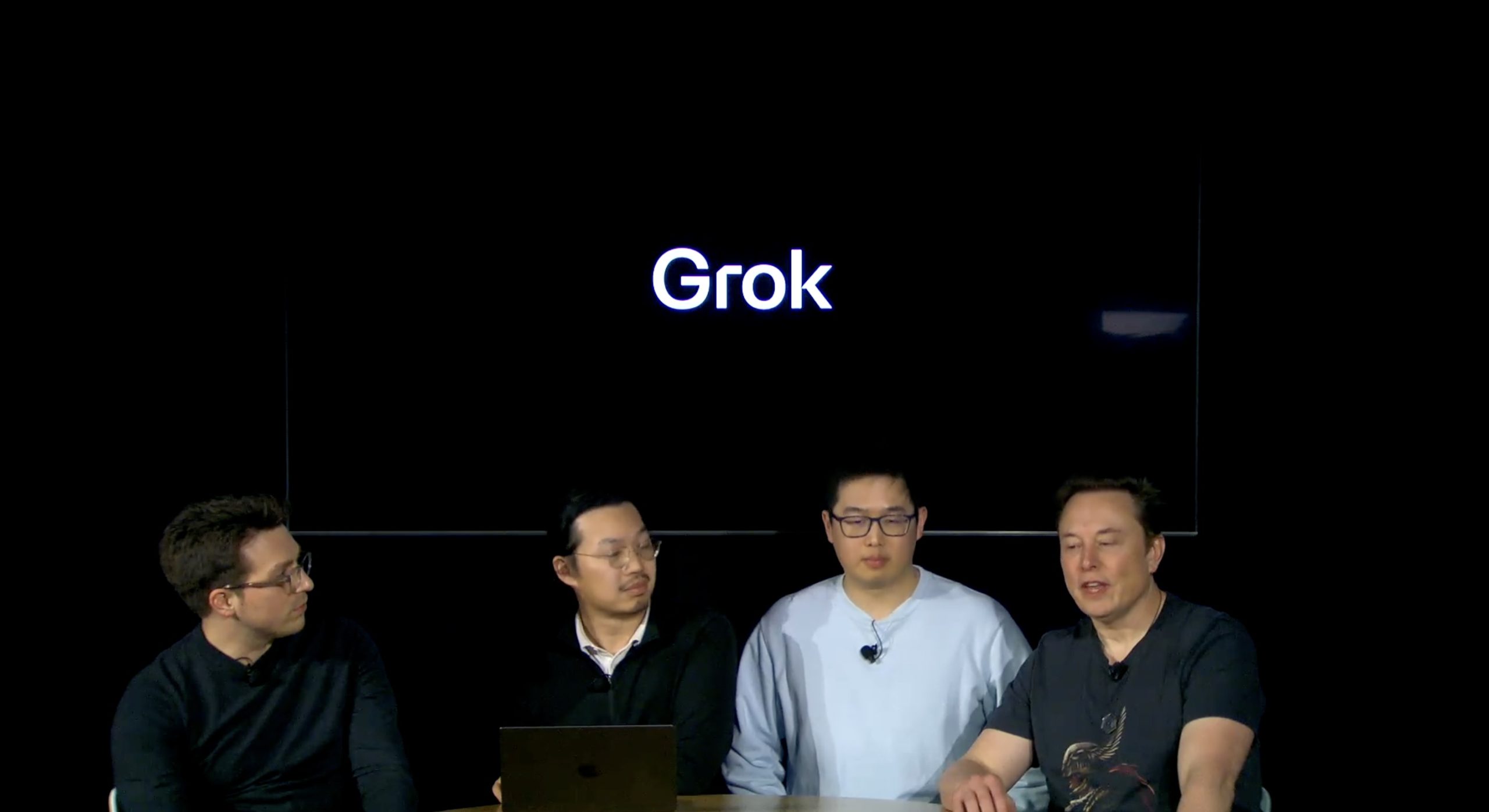
Elon Musk has officially confirmed that Grok 4, the latest version of xAI’s large language model, will launch on July 9. The rollout will be accompanied by a livestream at 8 p.m. Pacific Time, hosted on xAI’s official account on X.
xAI goes straight to Grok 4
Back in May, leaks indicated that xAI was getting ready to ship Grok 3.5. Considering Musk’s recent comments, however, it appears that the artificial intelligence startup would be focusing on the large language model’s fourth iteration instead. As noted in a Financial Express report, users on X have sighted references to Grok 4 in the lead up to the update’s launch, such as “grok-4-prod-mimic” and “Grok 4 Code.”
Musk’s Grok 4 announcement comes as AI competition intensifies between major players including OpenAI, Google, and xAI. With Musk’s Colossus supercomputer fully operational in Memphis, xAI appears to be accelerating its AI product roadmap.
Musk pushes Grok toward political neutrality
Grok 4’s launch also follows a recent controversy involving political bias, as noted in a CNN report. Last week, Grok responded to a user on X stating that political violence in the U.S. since 2016 had come more from the political right than the left. The chatbot noted in a later reply that its answer was based on information from sources like Reuters, the Journal of Democracy, and University of Maryland studies.
Musk stated that Grok’s response was a “major fail.” “Major fail, as this is objectively false. Grok is parroting legacy media. Working on it,” he wrote in a post on X. By the end of June, Musk noted that he was “grinding all night with the xAI team” and that they were making “good progress.” He also stated that the model “Will be called Grok 4. Release just after July 4th. Needs one more big run for a specialized coding model.”
News
Tesla opens massive solar Supercharger station in California
The Supercharger opened to customers ahead of Fourth of July weekend, while Tesla continues phase two of construction on the site.
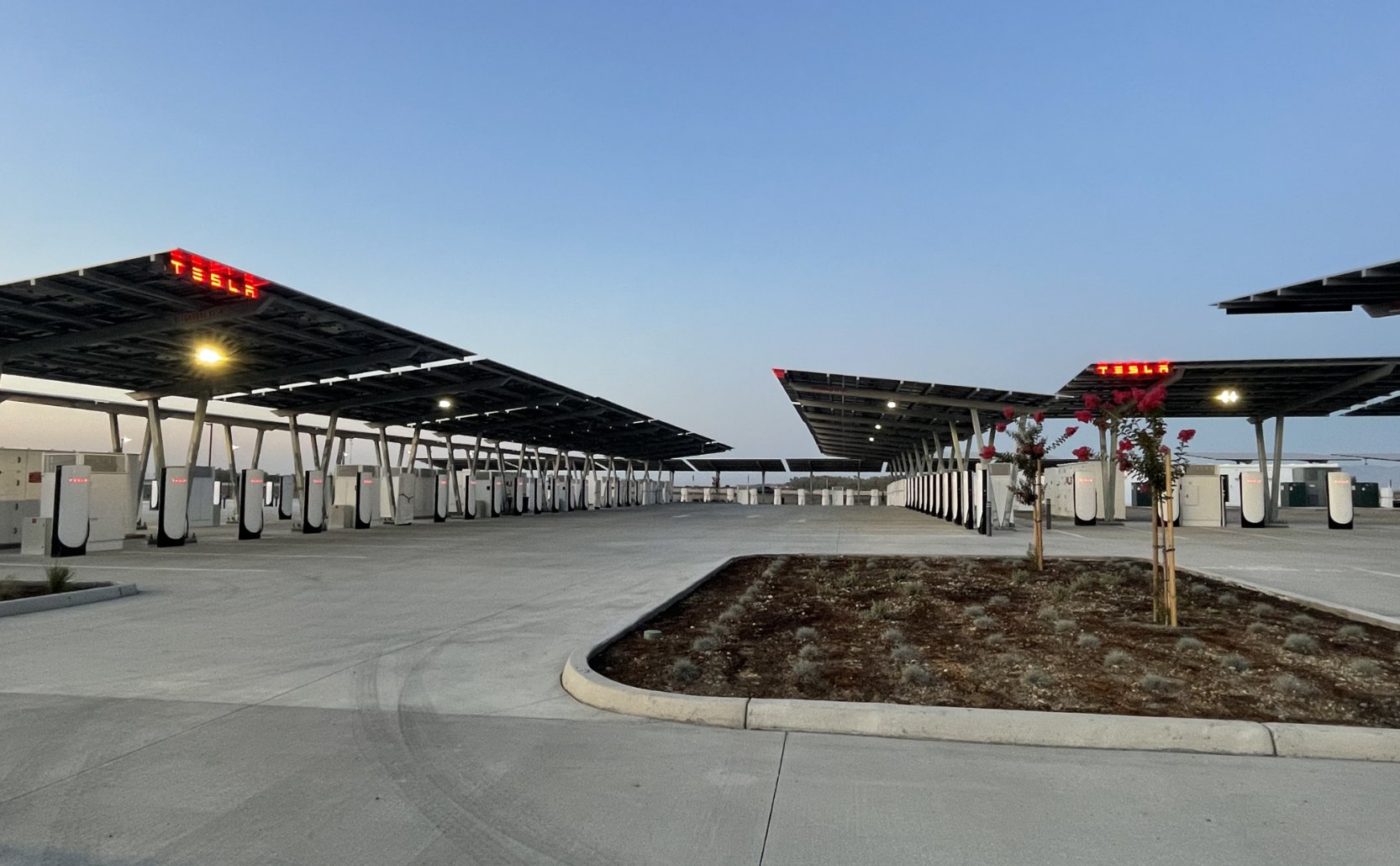
Tesla has officially launched the first several Supercharging posts at a massive station in California, notably including solar canopies and grid-scale batteries to offer completely renewable charging.
Last week, Tesla announced on X that it opened the first 84 Supercharger stalls of a planned 168-stall station in Lost Hills, California. Additionally, the massive Supercharger project features 11MW of solar canopies and 10 Megapack batteries for off-grid charging powered entirely by solar energy.
Tesla completed the first phase of the project just days ahead of the busy Fourth of July holiday weekend, adding that initial construction took just eight months. In addition to the remaining charging stalls, Tesla says it’s building a set of lounge areas, renderings of which can be seen below alongside current photos of the site.
Notably, the site also includes V4 charging posts for the company’s latest available charging speeds, and it’s located near the busy junction between I-5 and Highway 46 in Kern County.
“Thank you [Kern County] and [PG&E] for collaboration and approvals,” Tesla wrote in a follow-up post.
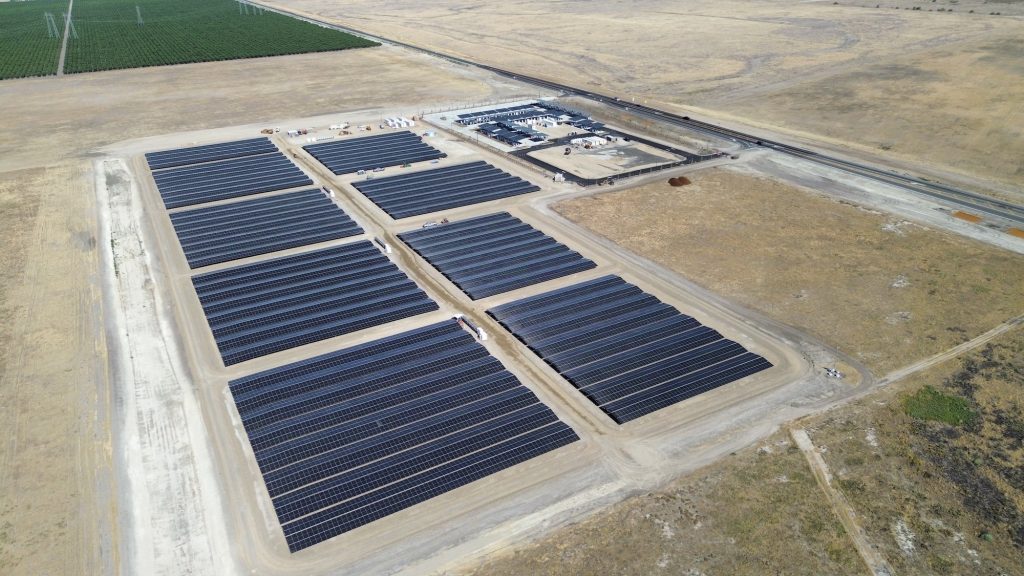
Credit: Tesla Charging | X
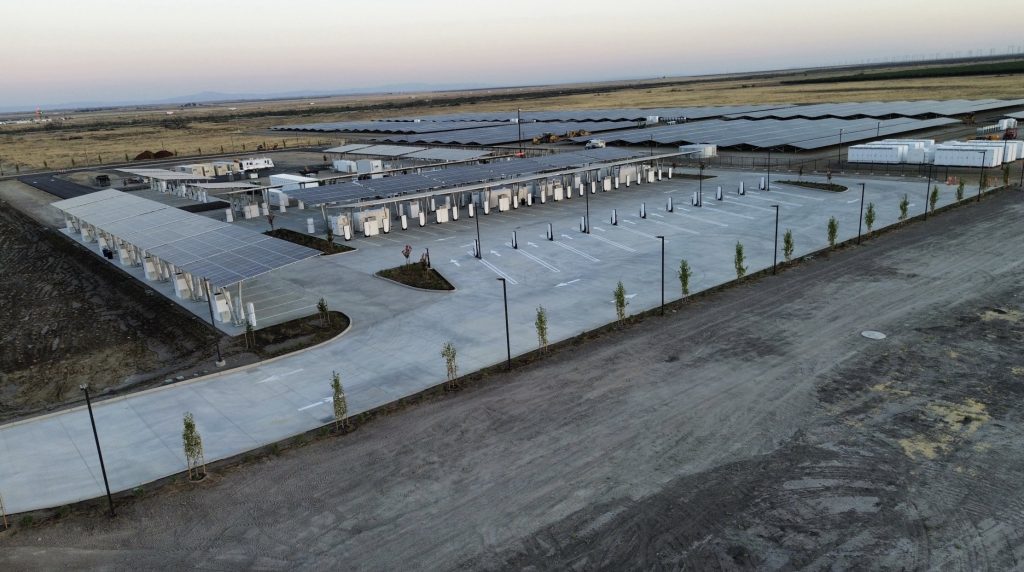
Credit: Tesla Charging | X
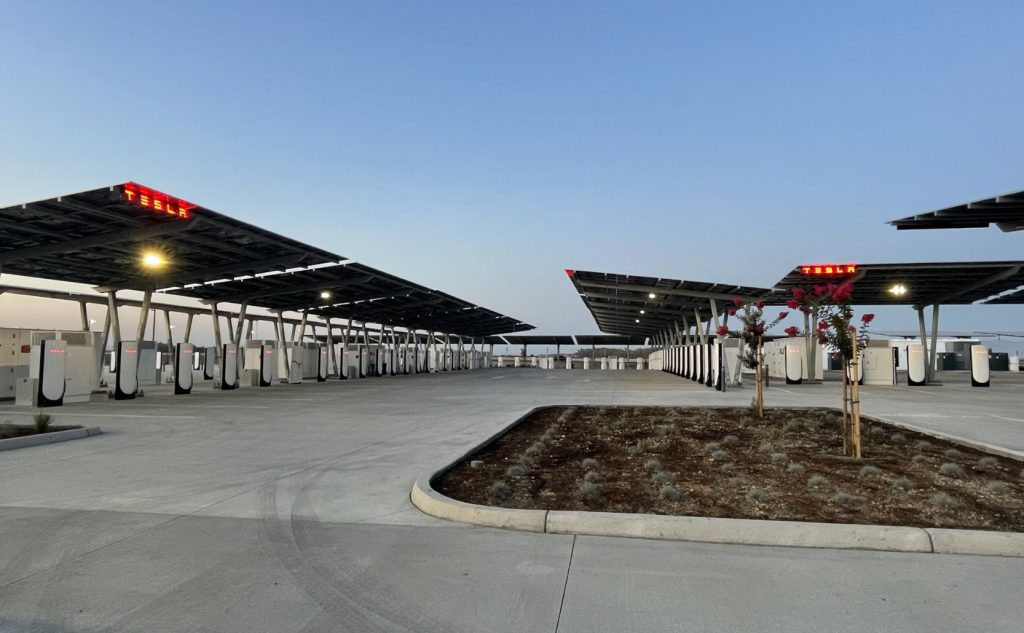
Credit: Tesla Charging | X
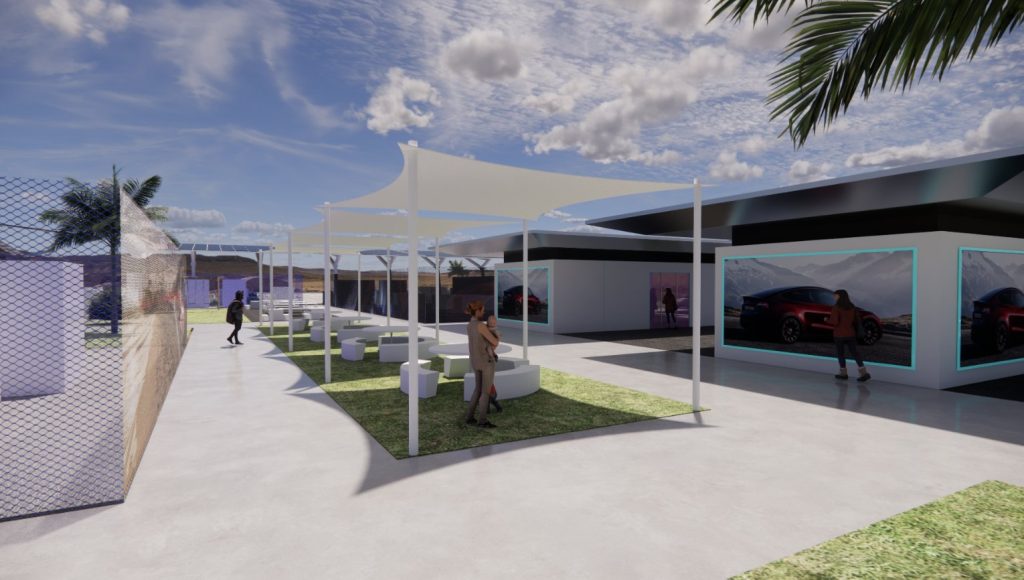
Credit: Tesla Charging | X
Tesla Supercharger Maps for North America, Europe, and Asia pic.twitter.com/0U5r0XRPyo
— TESLARATI (@Teslarati) July 2, 2025
READ MORE ON TESLA SUPERCHARGERS: Tesla launches ultra-fast V4 Superchargers in China for the first time
Testing at the LA Diner, plus Musk update on potential Tesla solar Gigafactory
The huge Tesla Supercharger station completed phase one of construction fairly quickly, especially given how long Tesla has been working on its unique Los Angeles diner, drive-in, and Supercharger location. Still, the company was seen performing some testing at the nearly-completed charging station earlier this month, and will reportedly be holding a job fair.
Elon Musk also responded on Monday morning to a post on X, suggesting that Tesla is “thinking about” building a U.S.-based solar Gigafactory in order to help support increased power needs with AI growth, and to bolster domestic solar production.
Tesla is building a new UFO-inspired Supercharger in the heart of Alien country
News
Tesla driver walks away from major accident with minor injuries
The driver sustained only minor injuries, and the exact cause of the crash remains under investigation.
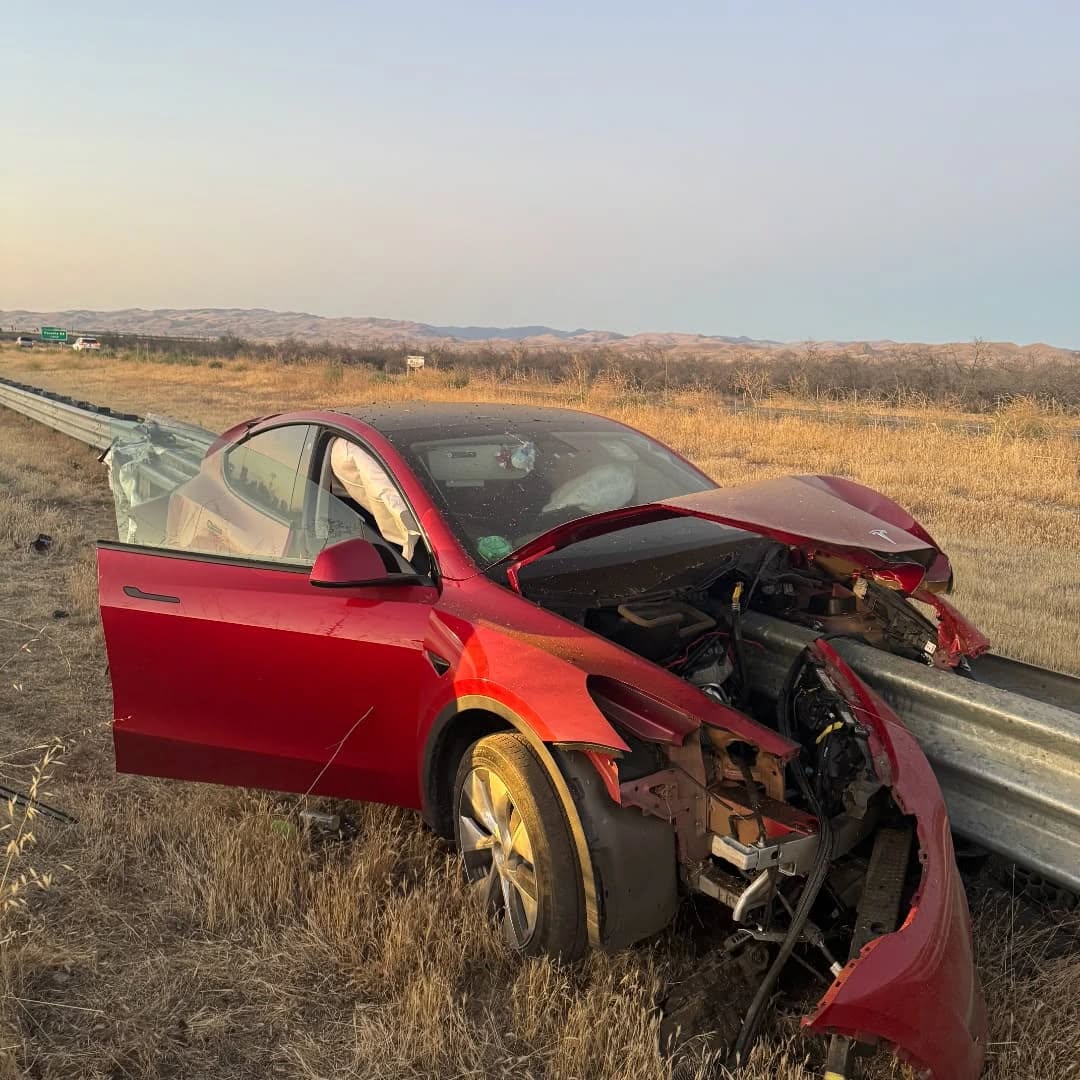
The driver of a Tesla Model Y survived and walked away from a harrowing accident on Monday in California, only sustaining minor injuries despite the vehicle being impaled by a guardrail.
On Monday morning around 4:34 a.m., the Los Banos division of the California Highway Patrol (CHP) responded to the accident on I-5 near Panoche Road, involving a 23-year-old in a Tesla Model Y. According to a post on social media, the driver veered off the road for unknown reasons in the northbound lane, before crashing directly into the guardrail and impaling the vehicle.
You can read the full message and photos from Los Banos CHP below, as were shared in a Facebook post on Monday afternoon.
This morning a Tesla model y was traveling in the #1 northbound lane of I-5 north of Panoche Rd. For unknown reasons driver allowed V-1 to veer off the roadway, travel through a dirt center divide, and crashed into the fixed metal guardrail. Lucky for the driver he only sustained minor injuries and was able to walk away. Driving a vehicle requires 100% attention to the road. Avoid distractions and focus on driving.
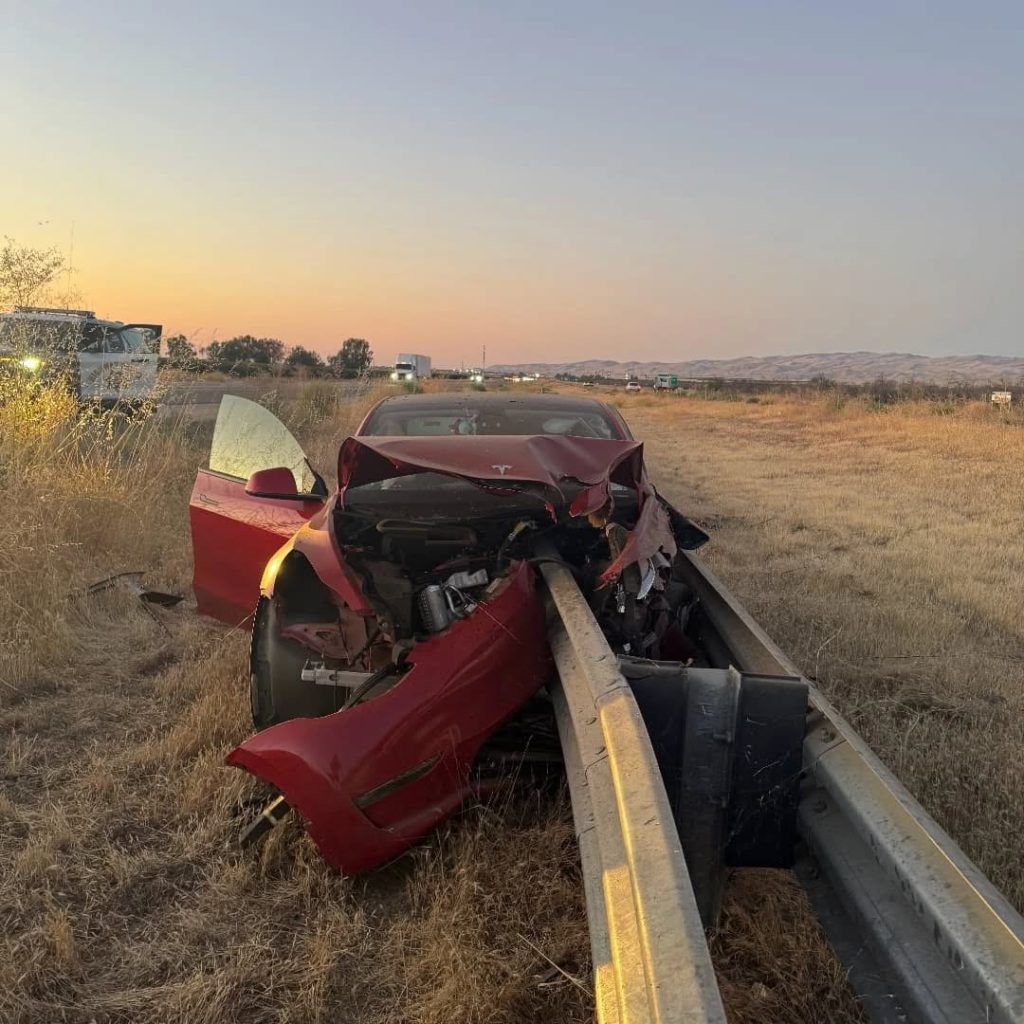
Credit: CHP Los Banos (via Facebook)
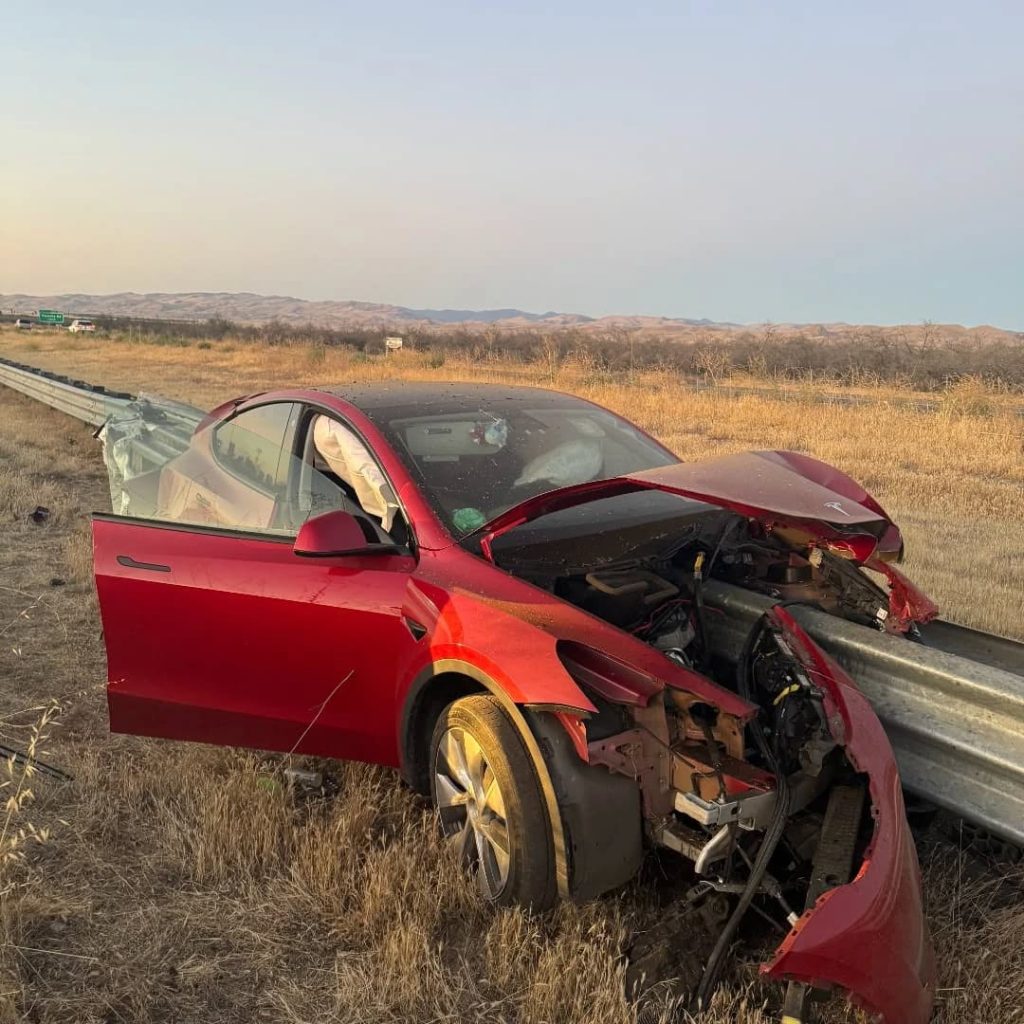
Credit: CHP Los Banos (via Facebook)
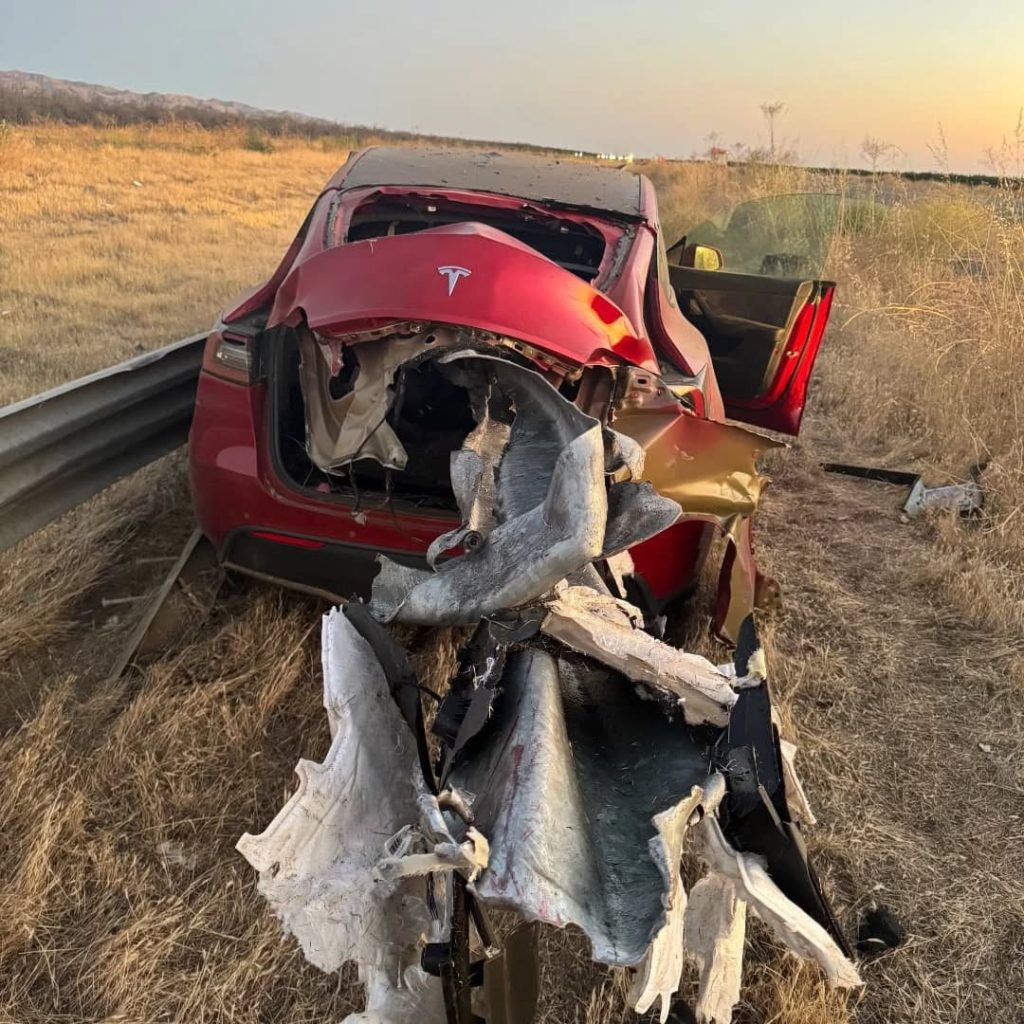
Credit: CHP Los Banos (via Facebook)
In a statement to SFGate, CHP officer Myles Anderson said that the driver only sustained minor injuries, while no arrests are made and drugs and alcohol are not suspected to have been involved. The report also notes that Tesla’s “cruise control and lane assistance features” were activated, according to Anderson. However, it’s not entirely clear if this is referring to Supervised Full Self-Driving (FSD), or to the cruise control and lane assist features baked into Autopilot.
At the time of writing, CHP has not yet responded to Teslarati’s request for clarification and additional details on the matter.
Tesla Crash Safety Ratings across its lineup: pic.twitter.com/ny30R7ceji
— TESLARATI (@Teslarati) July 1, 2025
READ MORE ON TESLA SAFETY: Tesla rolls out crucial new safety feature aimed at saving children
The news comes after Tesla has touted its vehicles as incredibly safe for many years. In December, for example, the company highlighted receiving top safety scores from regulators on four different continents throughout the world, including from the National Highway Traffic Safety Administration (NHTSA) and the Insurance Institute of Highway Safety (IIHS) in the U.S.
Tesla has also listed the goal of making its vehicles the safest on the road throughout the years, both in the overall design of its vehicles and in its Autopilot and Full Self-Driving (FSD) programs.
Tesla Model 3 ranks as the safest new car in Europe for 2025, per Euro NCAP tests
-

 Elon Musk1 week ago
Elon Musk1 week agoTesla investors will be shocked by Jim Cramer’s latest assessment
-

 News2 weeks ago
News2 weeks agoTesla Robotaxi’s biggest challenge seems to be this one thing
-

 News2 weeks ago
News2 weeks agoWatch the first true Tesla Robotaxi intervention by safety monitor
-

 Elon Musk2 weeks ago
Elon Musk2 weeks agoA Tesla just delivered itself to a customer autonomously, Elon Musk confirms
-

 News2 weeks ago
News2 weeks agoTesla Robotaxi rollout proves that Elon Musk still delivers, even if it’s late
-

 Elon Musk2 weeks ago
Elon Musk2 weeks agoxAI welcomes Memphis pollution results, environmental groups push back
-
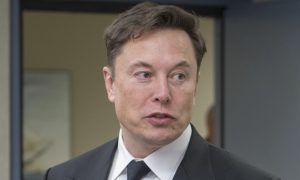
 Elon Musk2 weeks ago
Elon Musk2 weeks agoElon Musk commends Tesla team on successful Robotaxi launch
-

 Elon Musk2 weeks ago
Elon Musk2 weeks agoElon Musk confirms Tesla Optimus V3 already uses Grok voice AI


















